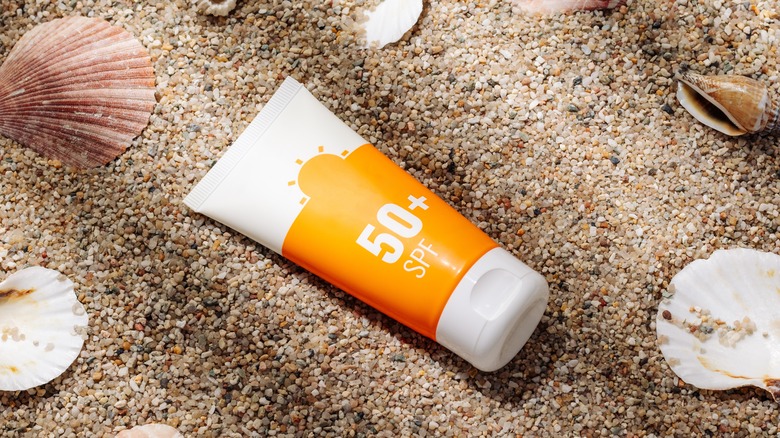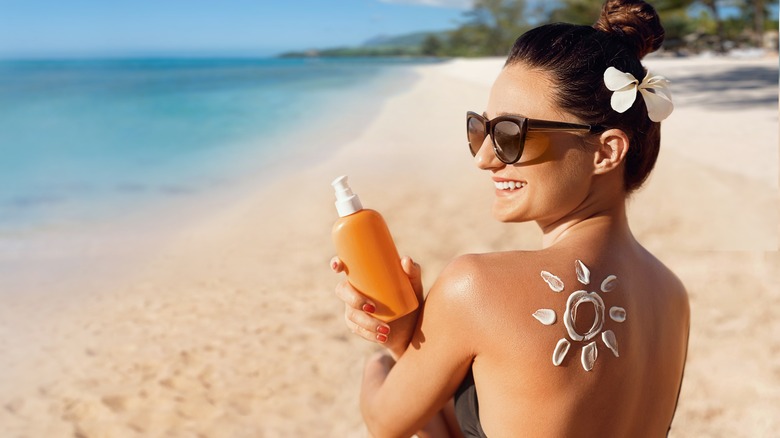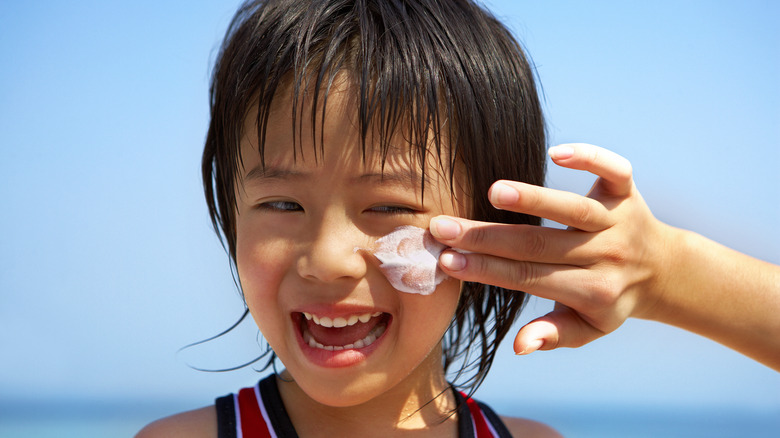Travel Guides Beach Vacations
Jenna Busch
We all know the importance of putting on sunscreen these days. Gone are the summers when we’d cover ourselves in baby oil or tan accelerator (yes, that was a real thing), make a reflection box with foil and cardboard, and bake for hours. You know sun exposure can lead to skin cancer and cause premature aging, so you always make sure to have it in your suitcase when you pack for vacation. You carefully decant some of your large container of SPF 30 into a travel-sized bottle … wait! Wrong move!
You should think twice about transferring your sunscreen into travel-sized bottles, according to an Instagram Reel from Dr. Michelle Wong, PhD, a Sydney, Australia-based cosmetic chemist, that explains why. An earlier video about the topic from Wong inspired cosmetic scientist Ava Perkins to test it out. We’ll give you the reasons behind the warning and tell you some other things you must know about sunscreen to keep your skin healthy.
Why you shouldn’t put sunscreen into travel bottles

lyalya_go/Shutterstock
While many other beauty products are fine being transferred from container to container, sunscreen isn’t one of them. Of course, we have to keep all carry-on liquids to 3.4 ounces, but it’s much safer to purchase a dedicated travel-sized bottle for that trip. Wong explained in her video that putting it in new containers (Perkins tried glass, metal, plastic, and silicone at different temperatures) can change the product and make it less effective.
Wong says that some of the ingredients in sunscreen make “good solvents,” meaning that the plastic of a new container (in one example) may absorb it or react with it. She said, “You might not end up with the same level of protection as before.” Wong also explained that the bottle the product comes in when you buy it may be protected against light and air, and those things can break down the sunscreen.
Another thing you should consider is if you’ve had other projects in there or if you’ve washed out the container well enough. If not, microbes could contaminate the product. That might not be that much of an issue for you if you’re using a face moisturizer or something like that, but when you’re counting on that sun protection, it’s a problem. After all, even one sunburn can increase your risk of developing skin cancer.
Important things to know about sunscreen

verona studio/Shutterstock
There are other important things to keep in mind when dealing with sunscreen. First, while the Skin Cancer Foundation and the Center for Disease Control (CDC) say you should use a minimum of SPF (sun protection factor) 15, the American Academy of Dermatology Association recommends using a product with an SPF of 30.
Make sure you’re getting sunscreen with the words “broad spectrum” on the label, so you’re covered for UVA and UVB rays to protect from skin cancer, according to Pfizer. You should put on the product at least 15 minutes before sun exposure and reapply every two hours. Try setting an alarm on your phone or writing the times in Sharpie on the bottle itself. Don’t forget spots like your scalp, lips, and between the toes. Put it on every day, even when it’s cloudy.
Finally, sunscreen has a three-year shelf life, and many have an expiration date. If it’s not there, Pfizer recommends writing down the date you purchased it on the bottle. If there are any color or consistency changes, throw it out.

